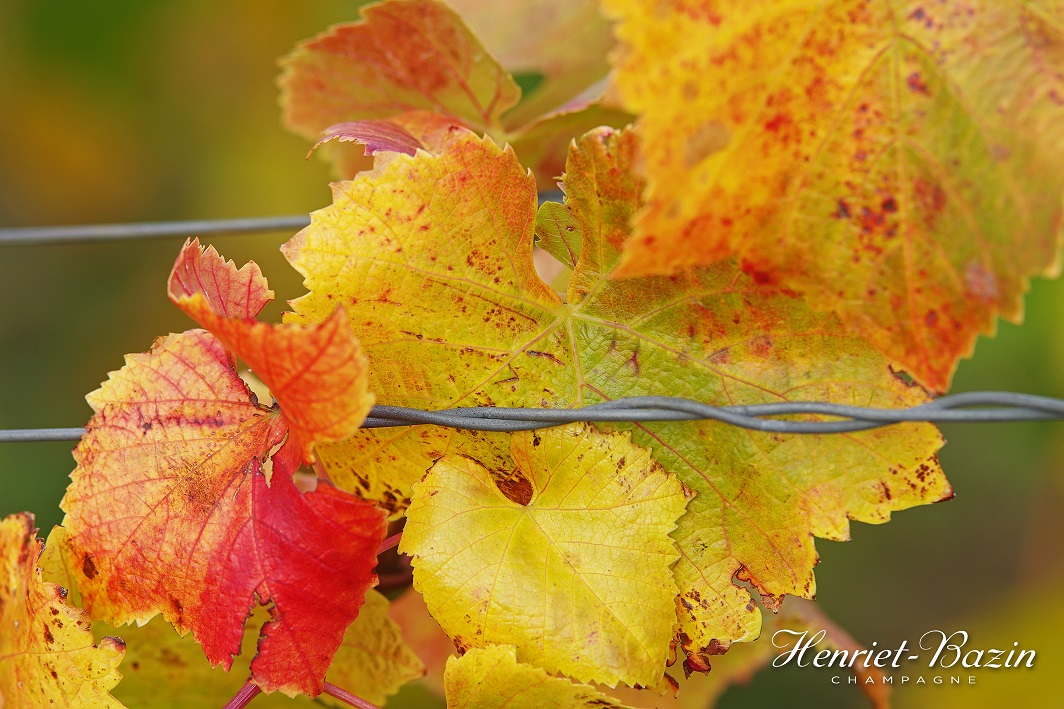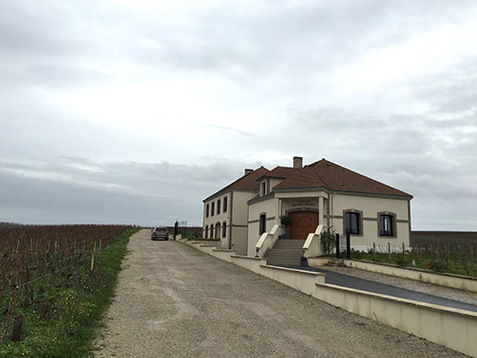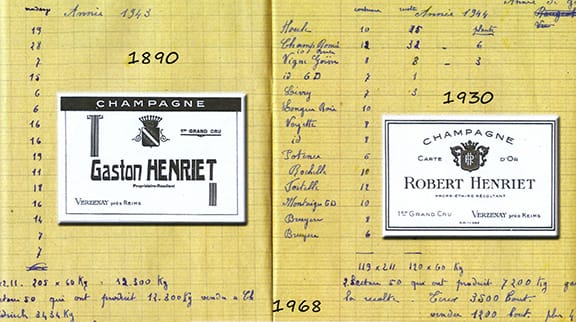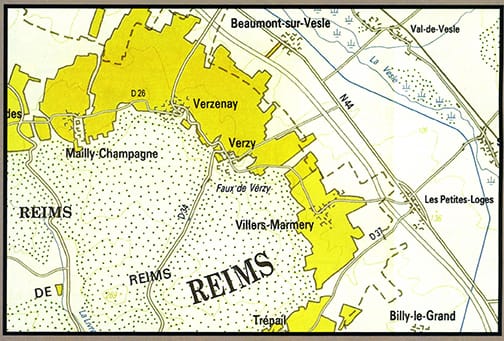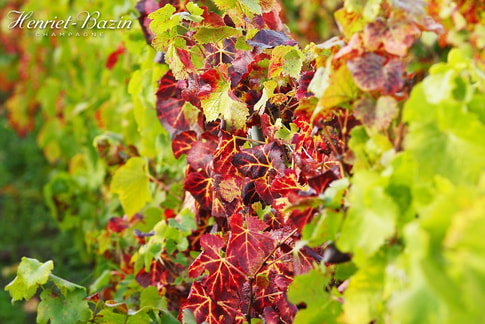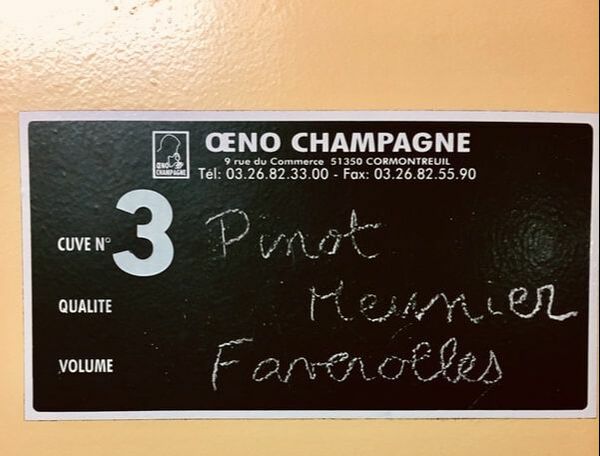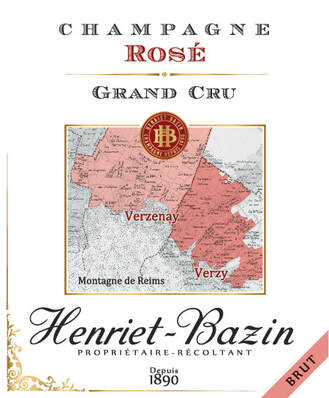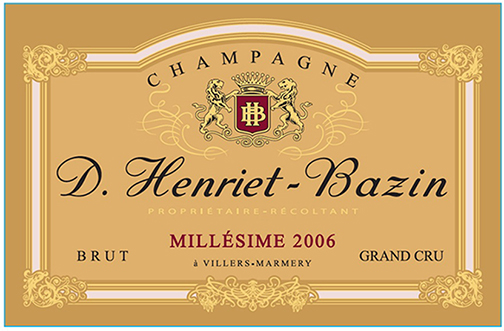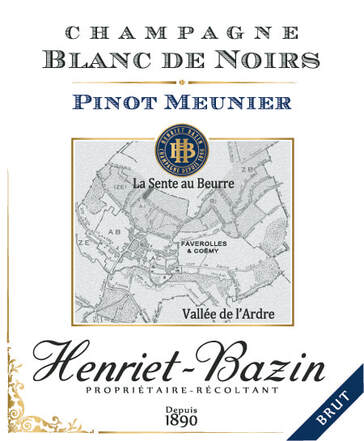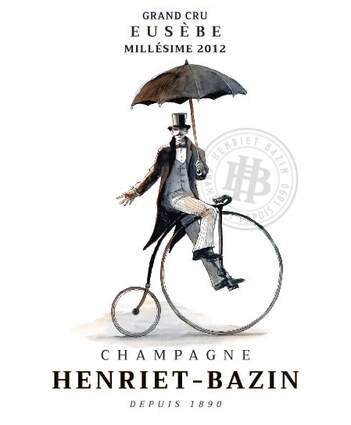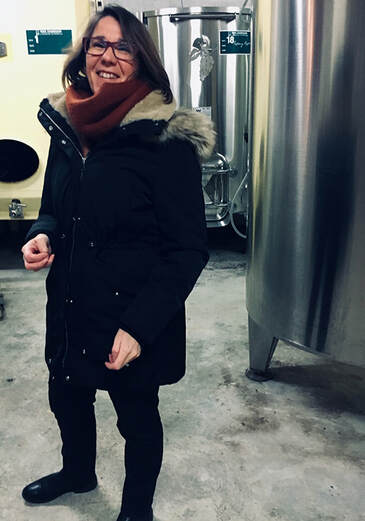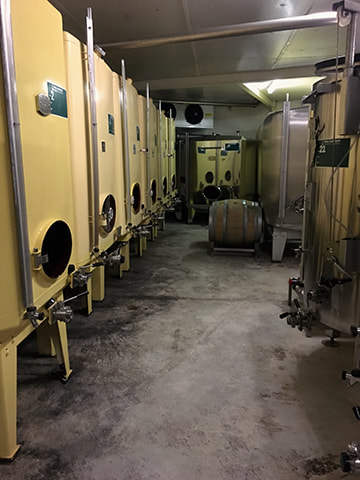Wines by region / Champagne / Villers-Marmery / Henriet Bazin
Champagne Henriet-Bazin — Montaigne de Reims
|
Villers-Marmery, Montaigne de Reims
Champagne Henriet-Bazin traces its origins to two families with deep roots in the Montaigne de Reims. The Bazin family came from the village of Verzenay where they cultivated vineyards and supplied grapes to some of the large houses. The Henriet family grew grapes in a neighboring village. Toward the end of the 19th century, Gaston Henriet married Eugénie Bazin and soon began making his own champagnes, a gutsy move at a time when very few independent Champagne producers existed in the region. However, it was Gaston’s son Robert and his wife Huguette who really expanded the business. They would travel the country and show their bubblies at fairs and markets, first in the local area, then outside of Champagne. They soon built up sales to 35,000 bottles—quite an achievement for a husband and wife team in those days!
In 1968, the family moved to the village of Villers-Marmery. This village, in the eastern part of the Montagne de Reims, is the only village planted with a majority (98%) of Chardonnay in a sea of Pinot Noir. The chalk here is very close to the surface of the soil and has a huge influence on the wines—something that helps make it one of only four villages in the Montagne de Reims that is premier cru for Chardonnay but not for the region’s predominant grape Pinot Noir. Since the beginning of the millennium, the firm has been run by Marie-Noëlle Henriet-Rainon (the 5th generation) and her husband Nicolas Rainon. They recently moved into a new house up the road from Robert and Huguette, and also expanded the winery. The domaine currently totals just over 6 hectares divided into 36 plots over three villages (Villers-Marmery, Verzy and Verzenay). They own 20 plots (2.72 hectares) in Villers-Marmery planted solely with Chardonnay. Here the soil is mostly composed of chalk gravel rather than silt and clay, offering Chardonnay that is both floral and mineraled.
To the northwest, Verzenay is nestled at the bottom of the slope and offers 427 hectares of vines classified as grand cru. Exposed northeast and north and east, the family's ten plots on 2.4 hectares are planted with 80% Pinot Noir and 20% Chardonnay. The white and soft chalk, just below the surface, is covered by silt, flint and chalk gravel. This soil helps produce wines that are solid, opulent and spicy.
Henriet-Bazin also farm seven plots containing just under 1 hectare of vines in Verzy, a town nestled in a valley below Villers-Marmery. Located at the edge of the forest, the village contains 406 hectares of vines sitting on a mix of chalk and gravel, with some stones and silt on the eastern slopes. Classified grand cru, Verzy is planted mostly with Pinot Noir. The wines tend to be elegant and fruity, with a particular floral trait.
The grapes for the domaine's wines are crushed in a 4,000 kg-capacity Bücher wine press. The must is cold-settled then aged in enamel-lined tanks. Some of the wines go through 100% malolactic fermentation before undergoing their secondary fermentation, and the champagnes spend varying amounts of time en tirage before disgorgement and bottling. Production is approximately 80,000 bottles per year, of which 40% is exported.
|
Champagne Henriet Bazin Rosé Grand Cru Brut NV
Made from 50% Chardonnay and 50% Pinot Noir, all from Verzy and Verzenay, both Grand Cru villages. The vines were planted between 1969 and 2006. The soil is chalky with outcrops of silt and gravel. This rosé is made with the addition of 19% still Pinot Noir from Verzenay vinified by the family. The reserve wine is a solera including very old wines and is added to the base wine from a single vintage. Annual production averages just over 10,000 bottles. The champagne spends 3 years en tirage before being disgorged. Dosage is 8 grams per liter (brut). Aromas include cherry, blackcurrant, toasted bread and raspberry. Further aeration offers licorice, black pepper, and clove. On the palate, some underlying citrus and chalk notes surface above its creamy texture. “Lively, mineral-tinged red berries and tangerine on the fragrant nose. Taut, focused and pure, offering bitter blood orange and pear skin flavors and a hint of buttery brioche. The mineral quality comes back strong on the finish, which shows impressive energy and thrust. 91 points. “—Josh Reynolds, International Wine Cellar Champagne Henriet Bazin Grand Cru Brut Millésime
This grand cru vintage champagne comes from the villages of Verzenay and Verzy. Exposure is north, east and northeast. The chalk soils also combine silt and gravel. The parcels were planted between 1963 and 1983. The blend is 70% Pinot Noir and 30% Chardonnay, all coming from a single vintage. Aged in enamel-lined tanks with no malolactic fermentation, this champagne spends 7 years en tirage before being disgorged with a dosage of 8 grams per liter. Its pale-yellow hue has golden highlights. The nose shows notes of cookies and caramelized apples. Further aromas include almond and iodine, along with spice (cinnamon, caraway), peach, cream and chalk. While full-bodied, it is also light on its feet, and the finish is both mineraled and long. Champagne Henriet Bazin Blanc de Noirs Grand Cru Brut NV
The Blanc de Noirs is 100% grand cru Pinot Noir, coming from Verzeney and Verzy. A blend of a single vintage with reserve wines ranging in age, this has spent 3 years en tirage and has 8 grams per liter dosage. The powerful red fruit aromas and flavors, as well as the focused elegance, of the grand cru terroir really shine through in this champagne. Champagne Henriet Bazin Blanc de Noirs Brut NV
100% Pinot Meunier, from a single plot called La Sente Au Beurre (“The Butter Path”) on the south slopes of the Ardre Valley, on fine marl soil. The grapes are harvested 100% by hand and the wine spends 3 years sur lie in the cellar. 8 grams/liter dosage. This champagne has the delicacy and elegance from the limestone sub-soil of its parcel, as well as the expressive creaminess of the Pinot Meunier grape Champagne Henriet-Bazin Grand Cru "Eusebie" 2012
A blend of 70% Pinot Noir and 30% Chardonnay from the family's grand cru vineyards, this is a very special cuvee that is a newer arrival in our portfolio. A pale golden color, it has yeasty and nutty aromas overlaid with a beautiful touch of honey. On the palate it is perfectly balanced, with honeyed and toasty notes alongside bright citrusy flavors. This is a very unique cuvee and a superb food Champagne as well. |
